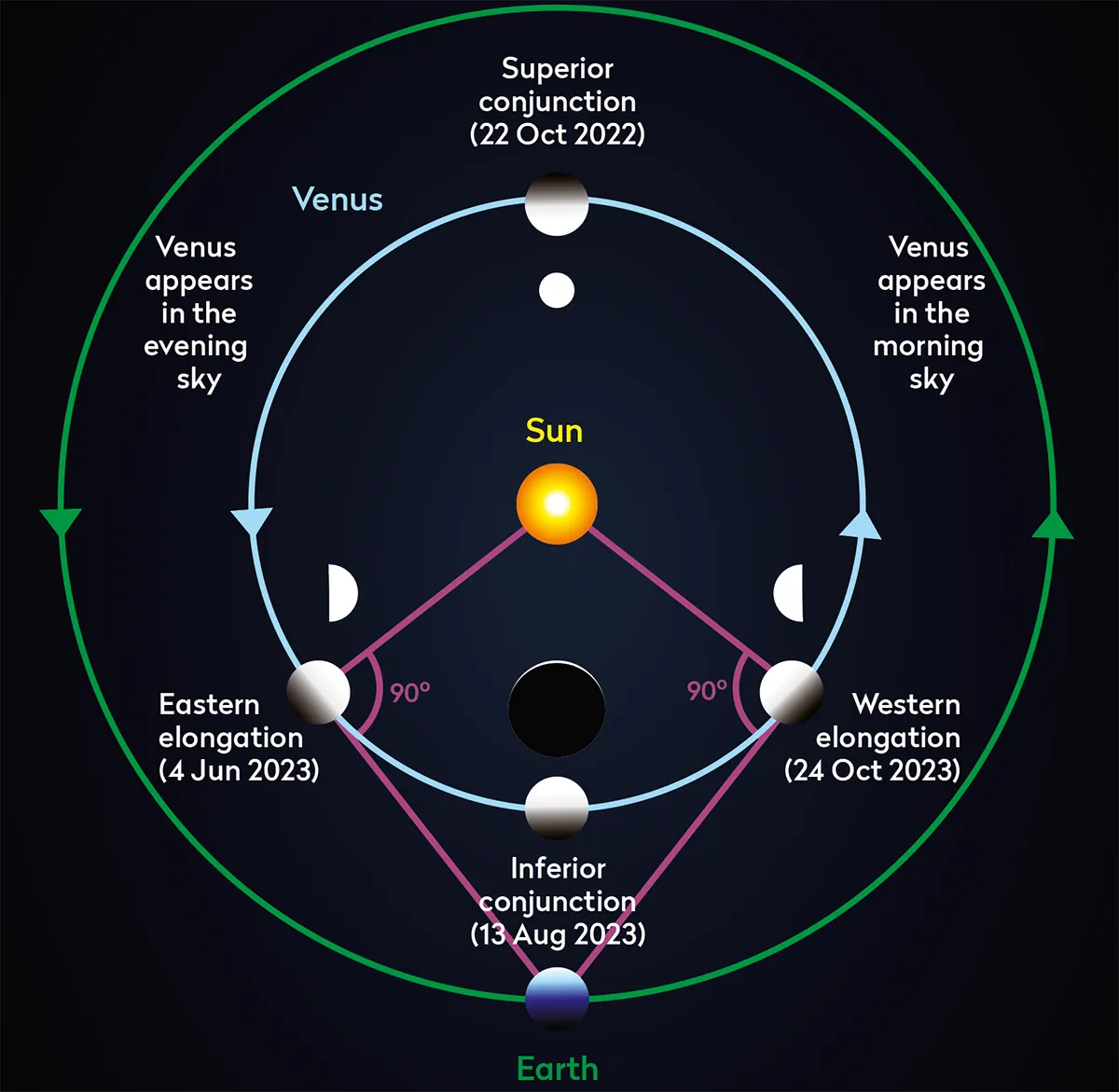Venus is an inferior planet. This doesn’t mean it’s a lesser world than ours, it’s simply a reference to the size of its orbit.
Inferior planets have smaller orbits than Earth, superior planets larger orbits. Mercury and Venus are inferior planets, the rest are superior.
Inferior planets are interesting to observe as their apparent sizes wax and wane noticeably over time and they show a full set of phases.
In 2023, Venus reaches greatest eastern elongation on 4 June, appearing 45.4° to the east of the Sun and brilliant in the evening twilight.
The planet should appear at 50% phase, known as dichotomy, on this date.
This means that May is a great chance to observe Venus before it fades.

The run up to dichotomy, say from 10 days before, is a good time to start making phase estimates and they’re really easy to do.
Simply observe Venus through the eyepiece, noting whether the planet’s terminator is straight or curved.
If straight, this is dichotomy. If curved, estimate how far across the diameter of Venus – at right angles to the terminator – the terminator extends.
As an example, if the terminator stretched one-third across the diameter of Venus, this would be a 33% phase.
Starting to observe early gives you more experience at making accurate assessments.

It’s easy to look and record ‘50%’ at a first glance, but is it really 50% or perhaps a little above or below that?
Why bother to do this? Surely the geometric position of Venus will give a precise and predictable value for its phase?
Actually, this is not the case. The planet’s thick atmosphere interferes with the apparent phase, giving rise to the ‘phase anomaly’, an effect that makes dichotomy appear earlier than it should when Venus is in the evening sky.
How early? Well, that’s up to you to find out!
Let us know how you get on by emailing us at contactus@skyatnightmagazine.com.
This guide originally appeared in the May 2023 issue of BBC Sky at Night Magazine.
